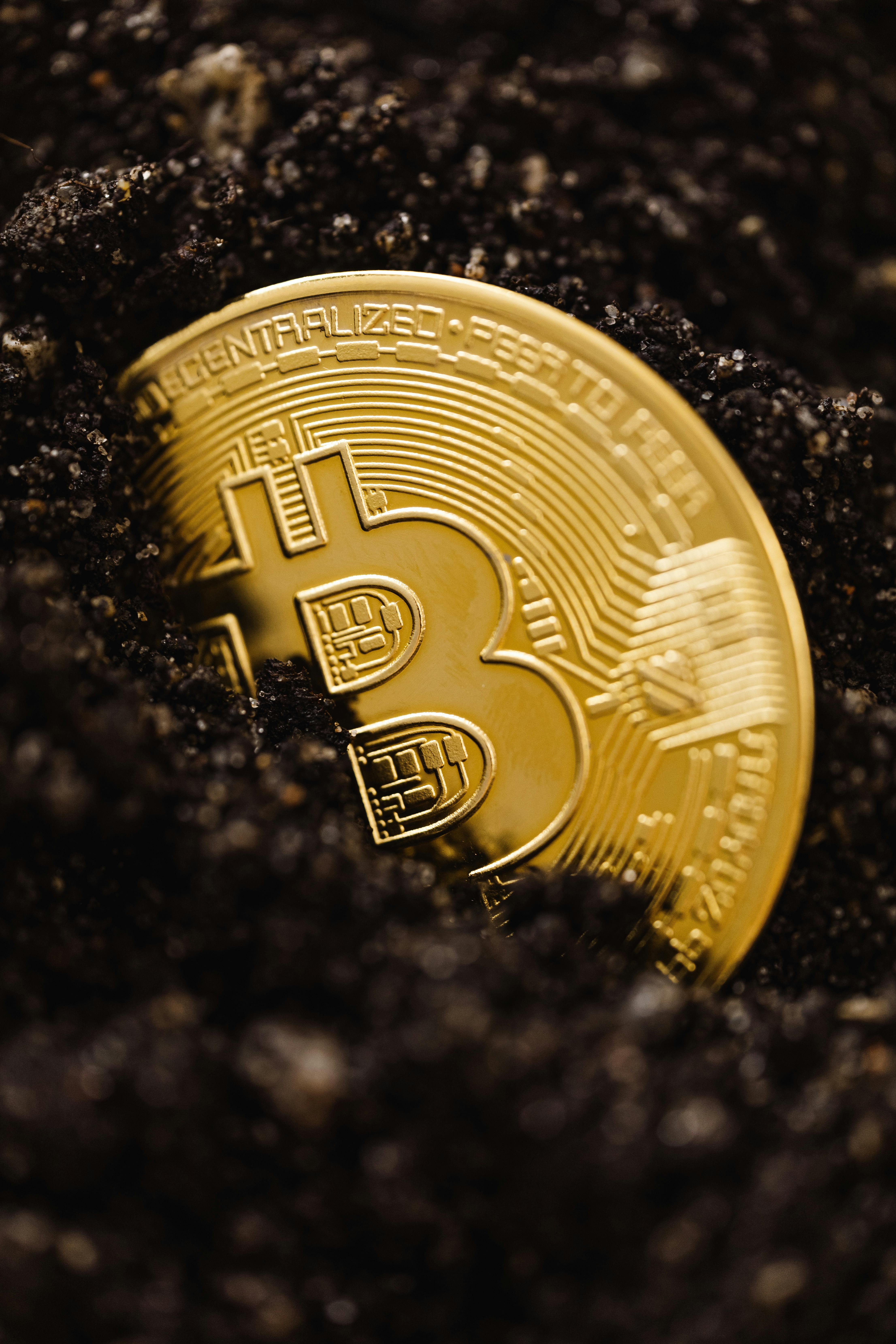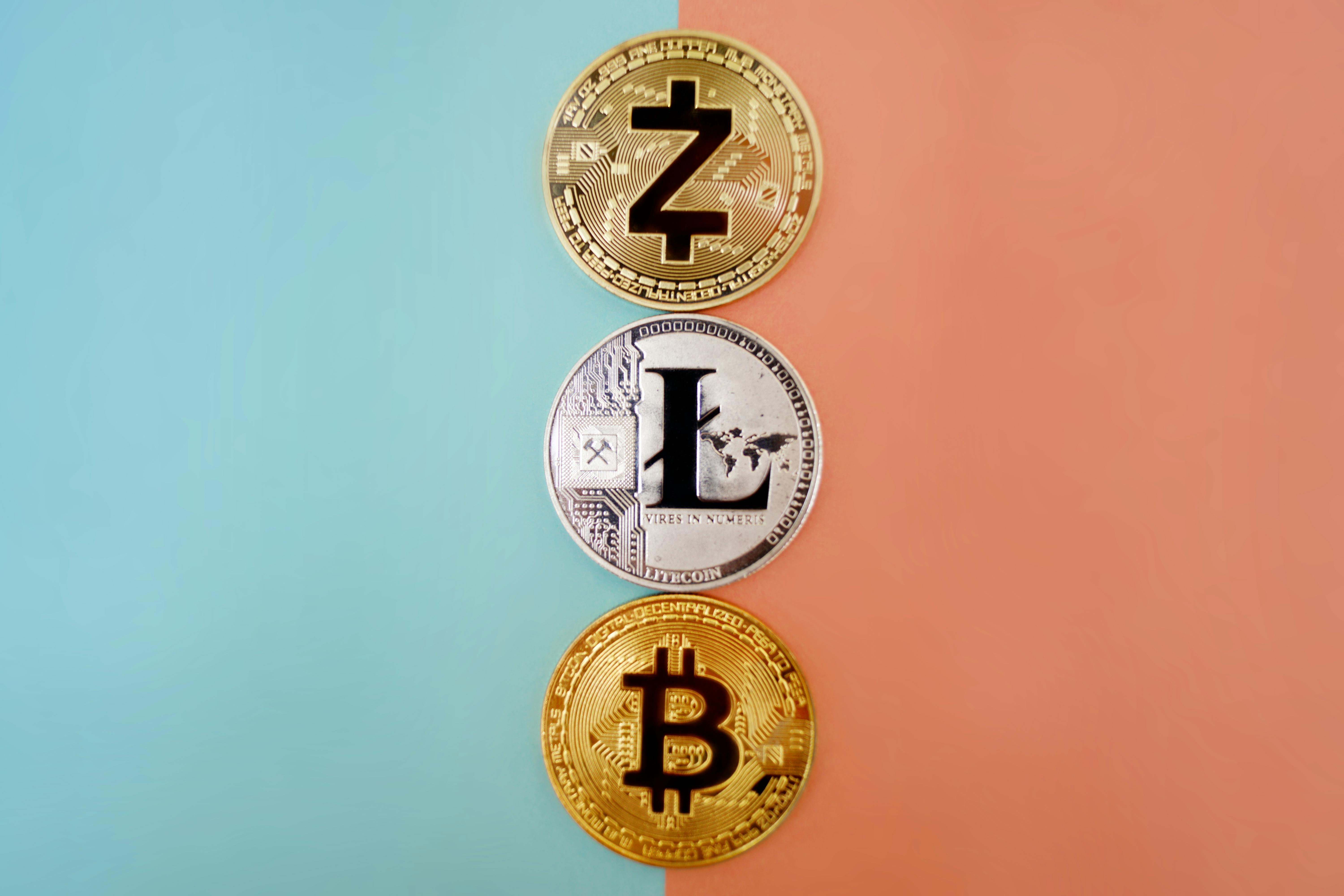Understanding the Differences Between Crypto and Gold Investments
If you’ve ever wondered about the divergent worlds of cryptocurrency and gold investments, this article is your guide. In today’s ever-changing landscape of financial opportunities, it’s essential to comprehend the distinctions between these two popular investment options. While both offer potential for wealth accumulation, they differ significantly in terms of volatility, accessibility, and value preservation. Join us as we navigate through the complexities of crypto and gold investments, unraveling their unique characteristics and helping you make more informed investment decisions. Whether you’re a seasoned investor or a newbie looking to dip your toe into the financial markets, this article is sure to provide valuable insights into the diverse worlds of crypto and gold investing.

This image is property of images.pexels.com.
▶▶▶▶ [Kucoin] Transaction fee 0% discount CODE◀◀◀◀◀
Store of Value
Cryptocurrency
Cryptocurrency, such as Bitcoin, has gained a reputation as a store of value in recent years. While it may not have the long-standing history of gold, it offers several unique features that make it an attractive option for investors looking to preserve their wealth. One of the key advantages of cryptocurrency as a store of value is its decentralized nature. Unlike traditional currencies that are controlled by central banks, cryptocurrencies rely on a decentralized ledger called blockchain. This means that no single entity has control over the currency, reducing the risk of government interference or manipulation.
Additionally, cryptocurrencies have a finite supply, with most of them having a predefined maximum number of coins that can ever exist. This limited supply creates scarcity, which can drive up the value of the cryptocurrency over time. Bitcoin, for example, has a maximum supply of 21 million coins, which is expected to be reached by the year 2140. The scarcity factor makes cryptocurrency an appealing option for investors looking for a long-term store of value.
Gold
Gold has long been recognized as a store of value throughout history. Its lustrous appeal and rarity have made it a sought-after asset for thousands of years. Gold’s store of value is rooted in its physical properties, as it is resistant to corrosion and maintains its shine over time. Unlike fiat currencies, which can be easily devalued by inflation or government policies, gold has retained its value through economic downturns and geopolitical uncertainties.
One of the advantages of gold as a store of value is its historical track record. Throughout centuries, gold has been a reliable hedge against inflation and economic uncertainty. It has been used to store wealth in times of crisis, as it is not tied to any specific country or government. Gold’s universal value has made it a staple investment for individuals and central banks alike, providing reassurance during turbulent times.
Volatility
Cryptocurrency
Cryptocurrencies are known for their high volatility. The value of cryptocurrencies can fluctuate significantly within a short period, leading to potential gains or losses for investors. This volatility is mainly driven by various factors such as market sentiment, regulatory developments, and technological advancements. While this volatility can present exciting opportunities for traders, it also poses risks for investors seeking a stable store of value.
However, it’s important to note that not all cryptocurrencies exhibit the same level of volatility. Established cryptocurrencies like Bitcoin and Ethereum tend to be less volatile compared to newer or smaller cryptocurrencies. This is because larger cryptocurrencies have more liquidity and a larger user base, which can help stabilize their prices to some extent. Nevertheless, investors should be prepared for the inherent volatility of the cryptocurrency market when considering it as a store of value.
Gold
Gold, on the other hand, is known for its relatively low volatility compared to cryptocurrencies. While its price can still fluctuate, the swings are generally smaller and more predictable than the wild price movements seen in the cryptocurrency market. Gold’s stability can be attributed to its extensive history as a store of value, its widespread acceptance, and its deep and liquid markets.
During times of economic uncertainty, gold has often been viewed as a safe haven asset, with investors flocking to its stability and long-term value. This stability makes gold an attractive option for those who prioritize stability and want to avoid the roller coaster-like volatility of cryptocurrencies.

This image is property of images.pexels.com.
▶▶▶▶ [Kucoin] Transaction fee 0% discount CODE◀◀◀◀◀
Accessibility
Cryptocurrency
Cryptocurrencies have gained popularity due to their accessibility. Anyone with an internet connection and a digital wallet can easily buy, sell, and store cryptocurrencies. This accessibility has opened up investment opportunities to a broader range of people, including those who may not have access to traditional financial markets.
Furthermore, cryptocurrencies offer a low barrier to entry, allowing investors to start with small amounts of money. This is in contrast to traditional investments, such as gold, which often require larger initial capital. The fractional ownership nature of cryptocurrencies also allows for easy divisibility, enabling investors to buy and sell smaller fractions of a cryptocurrency as desired.
Gold
Gold, although physically tangible, is also accessible to a wide range of investors. It can be purchased through various channels, including bullion dealers, banks, and online platforms. While physical possession of gold may require additional security measures, investors also have the option of investing in gold through financial instruments such as exchange-traded funds (ETFs) or gold mining stocks.
However, it’s worth noting that the accessibility of gold may vary depending on geographical location. In some regions, purchasing and storing physical gold may be more challenging or come with additional costs. Nevertheless, gold remains a widely accessible investment option for individuals looking to diversify their portfolios and preserve wealth.
Liquidity
Cryptocurrency
Cryptocurrencies, particularly the more established ones like Bitcoin, offer high liquidity. The cryptocurrency market operates 24/7, allowing investors to buy and sell cryptocurrencies at any time. This constant availability, combined with the global reach of cryptocurrencies, ensures that there is generally a ready market for trading cryptocurrencies.
Another aspect that adds to the liquidity of cryptocurrencies is the ability to transfer them quickly and seamlessly. With cryptocurrencies, transactions can be completed within minutes, regardless of the geographical location of the parties involved. This speed and ease of transfer contribute to the liquidity of cryptocurrencies and provide investors with the flexibility to access their funds when needed.
Gold
Gold also boasts high liquidity, thanks to its long-standing role as a globally accepted medium of exchange. Being a precious metal with universal value, gold can easily be converted into cash or other assets across various markets worldwide. The gold market has deep liquidity, with numerous buyers and sellers actively participating in trading gold.
Gold’s liquidity is further enhanced by its standardized form. Gold bullion and coins, which are commonly used for investment purposes, have set weights and purities, making them readily recognizable and tradable. Additionally, gold markets, such as the London Bullion Market Association (LBMA), provide a trusted platform where buyers and sellers can trade gold with transparency and efficiency.

This image is property of images.pexels.com.
Portability
Cryptocurrency
Cryptocurrencies excel in terms of portability. As digital assets, cryptocurrencies can be stored in a digital wallet, which can be accessed from various devices with an internet connection. This allows you to carry your entire cryptocurrency holdings conveniently in your pocket or travel with them wherever you go.
The portability of cryptocurrencies also extends to their ease of transfer. With just a few clicks, you can send cryptocurrencies to anyone in the world, bypassing the need for banks or intermediaries. This ability to move funds globally eliminates the limitations and delays associated with traditional banking systems and enables faster and cheaper cross-border transactions.
Gold
While gold may be physically tangible, it still offers a degree of portability. Gold in the form of coins or small bars can be easily carried, and its high value-to-weight ratio allows for significant amounts of wealth to be transported discreetly. However, when it comes to larger quantities or significant investments, physical gold might become less practical due to weight and security concerns.
For those who prefer a more convenient option, gold can be stored in safe deposit boxes or professionally managed vaults. This allows investors to hold significant amounts of gold while benefiting from the security measures and ease of access provided by these storage solutions.
Supply
Cryptocurrency
Cryptocurrencies are typically created with predetermined rules governing their supply. Bitcoin, for example, has a maximum supply of 21 million coins, and the rate of new coin issuance is gradually decreasing over time. This fixed and transparent supply schedule helps maintain scarcity and prevents excessive inflation, giving investors confidence in the value of their holdings.
Furthermore, the supply of cryptocurrencies is not subject to human intervention or manipulation. The issuance of new coins is typically governed by mathematical algorithms and consensus mechanisms, ensuring that the creation of new coins is transparent and decentralized. This feature distinguishes cryptocurrencies from fiat currencies, which can be printed or manipulated by central banks.
Gold
Gold’s supply is determined by natural factors, such as mining production and discoveries of new gold deposits. While the exact amount of gold on Earth is unknown, it is estimated that around 197,576 tons of gold have been mined throughout history. Unlike cryptocurrencies, gold’s supply is not fixed, and new gold can be mined as long as viable deposits are discovered and extracted.
The limited supply of gold, combined with the challenges and costs associated with mining, helps maintain its value over time. However, gold mining can be influenced by economic factors, such as fluctuations in gold prices and mining costs. Additionally, geopolitical events or restrictions on mining activities in certain regions can affect the overall supply of gold in the market.
![]()
Storage
Cryptocurrency
Storing cryptocurrencies involves digital wallets, which can be software-based or hardware devices specifically designed for securely holding cryptocurrencies. These wallets store the cryptographic keys required to access and transfer funds. Digital wallets provide a secure and convenient way to store cryptocurrencies, as they offer protection against hacking and unauthorized access.
Software wallets, such as mobile or desktop wallets, are accessible through devices connected to the internet. They provide ease of use and are suitable for day-to-day transactions. Hardware wallets, on the other hand, are physical devices that store private keys offline, isolating them from potential online threats. The use of hardware wallets adds an extra layer of security and is recommended for those seeking long-term storage of cryptocurrencies or large amounts of funds.
Gold
Gold storage options vary depending on personal preference and the amount of gold being stored. For smaller amounts, physical possession is an option, as gold coins or bars can be securely stored in a safe or a home vault. However, storing larger quantities of gold at home may raise concerns around security and insurance.
For those who prefer professional storage services, secure vault facilities provide a safe and insured environment for storing gold. These facilities offer advanced security measures, including surveillance systems, physical barriers, and multiple layers of access control. Investors can choose from various storage providers that cater specifically to gold storage needs, ensuring the safety and integrity of their precious metal holdings.
Transparency
Cryptocurrency
Cryptocurrencies are built on blockchain technology, which provides an immutable and transparent ledger of all transactions. This transparency allows anyone to verify the movement of funds and ensures that transactions cannot be altered or reversed without consensus. The public nature of blockchain technology also promotes accountability and trust among participants in the cryptocurrency ecosystem.
In addition to transaction transparency, many cryptocurrencies, especially the more established ones, have open-source code. This means that anyone can view and contribute to the codebase, enhancing transparency and enabling the community to identify and fix potential vulnerabilities or bugs. The open nature of cryptocurrency development fosters collaboration and innovation within the community.
Gold
Gold’s transparency is primarily reflected in its established and regulated markets, where prices and trading volumes are publicly available. The London Bullion Market Association (LBMA) and other reputable gold exchanges provide real-time prices and market data, allowing investors to make informed decisions based on transparent market information.
Another aspect of gold’s transparency is its physical form. The weight, purity, and authenticity of gold can be verified through standardized tests and certifications. These tests, such as the use of specific acids or X-ray fluorescence analysis, ensure that investors are receiving genuine gold of the expected purity and value. The transparency of gold’s physical properties adds reassurance and confidence to investors.
![]()
Regulation
Cryptocurrency
Regulation around cryptocurrencies varies significantly across jurisdictions. Some countries have embraced cryptocurrencies and enacted favorable regulations, while others have adopted a cautious approach or imposed restrictive measures. The decentralized nature of cryptocurrencies makes regulatory frameworks complex and challenging to implement uniformly worldwide.
Regulation, when properly designed, can provide investor protection, prevent fraud, and promote market stability. Regulations may involve licensing requirements for cryptocurrency exchanges, anti-money laundering (AML) and know-your-customer (KYC) procedures, and taxation policies. The extent of regulation can impact the accessibility and acceptance of cryptocurrencies in different countries and affect their long-term viability as a store of value.
Gold
Gold has a long history of regulatory oversight, with various laws and regulations governing its production, trade, and storage. Governments generally have well-established systems in place to regulate the gold industry and ensure compliance with legal and ethical standards. Precious metals dealers and refineries often require licenses and adhere to strict anti-money laundering measures.
Regulation of the gold market is primarily focused on preventing illegal activities, such as money laundering and smuggling. By regulating the gold industry, governments aim to safeguard the integrity of the market, protect investors, and maintain transparency in the buying and selling of gold. These regulatory measures contribute to the trustworthiness and reliability of gold as a store of value.
Utility
Cryptocurrency
Cryptocurrencies offer utility beyond being a mere store of value. With the rise of blockchain technology, cryptocurrencies have become foundational elements of decentralized applications (dApps) and smart contracts. Ethereum, for example, enables the creation and execution of smart contracts, allowing for self-executing agreements without the need for intermediaries.
Furthermore, cryptocurrencies can be used for global remittances, providing a faster and more cost-effective alternative to traditional money transfer methods. Cryptocurrencies eliminate the need for multiple intermediaries, reduce transaction fees, and minimize delays associated with cross-border transactions.
Additionally, cryptocurrencies have opened up opportunities for innovative fundraising methods, such as initial coin offerings (ICOs) and decentralized finance (DeFi) platforms. These advancements in cryptocurrency utility have sparked widespread interest and investment in the space, positioning cryptocurrencies as not only a store of value but also as a means to drive technological innovation.
Gold
Gold’s utility extends beyond its role as a store of value. The versatility of gold as a material has led to various industrial applications, particularly in electronics, dentistry, and aerospace industries. Gold’s high conductivity, resistance to corrosion, and desirable physical properties make it an essential component in various technological advancements.
Furthermore, gold jewelry and ornaments have been cherished for their aesthetic value throughout history. Gold’s beauty, durability, and rarity have made it a highly sought-after material for personal adornment and cultural significance.
Gold’s utility in different industries enhances its overall value proposition and provides additional demand drivers that can impact its price and long-term value.
In conclusion, both cryptocurrency and gold offer unique features and characteristics that make them appealing as stores of value. Cryptocurrency provides accessibility, portability, and transparency through its digital nature and decentralized infrastructure. While it can be volatile, its limited supply and utility in various applications contribute to its long-term value proposition.
On the other hand, gold’s long-standing history as a store of value, stability, and wide acceptance make it a reliable choice for wealth preservation. Its physical tangibility, high liquidity, and versatility in industries contribute to its enduring allure.
Ultimately, the choice between cryptocurrency and gold as a store of value depends on individual preferences, risk tolerance, and investment objectives. Diversifying one’s portfolio with a combination of both assets may provide a balanced approach to wealth preservation, combining the advantages of each asset class.
▶▶▶▶ [Kucoin] Transaction fee 0% discount CODE◀◀◀◀◀
Discover more from Stockcoin.net
Subscribe to get the latest posts sent to your email.